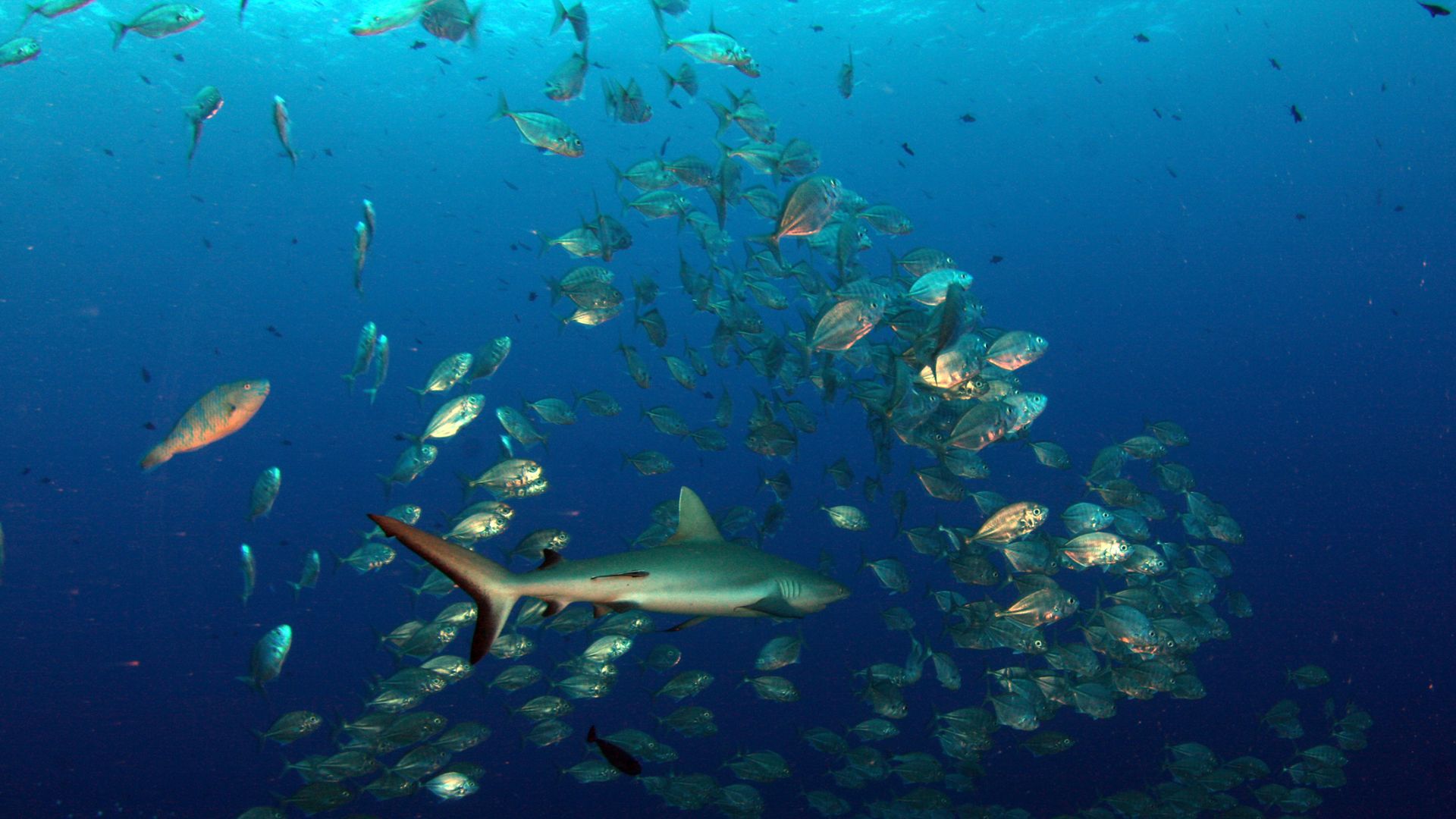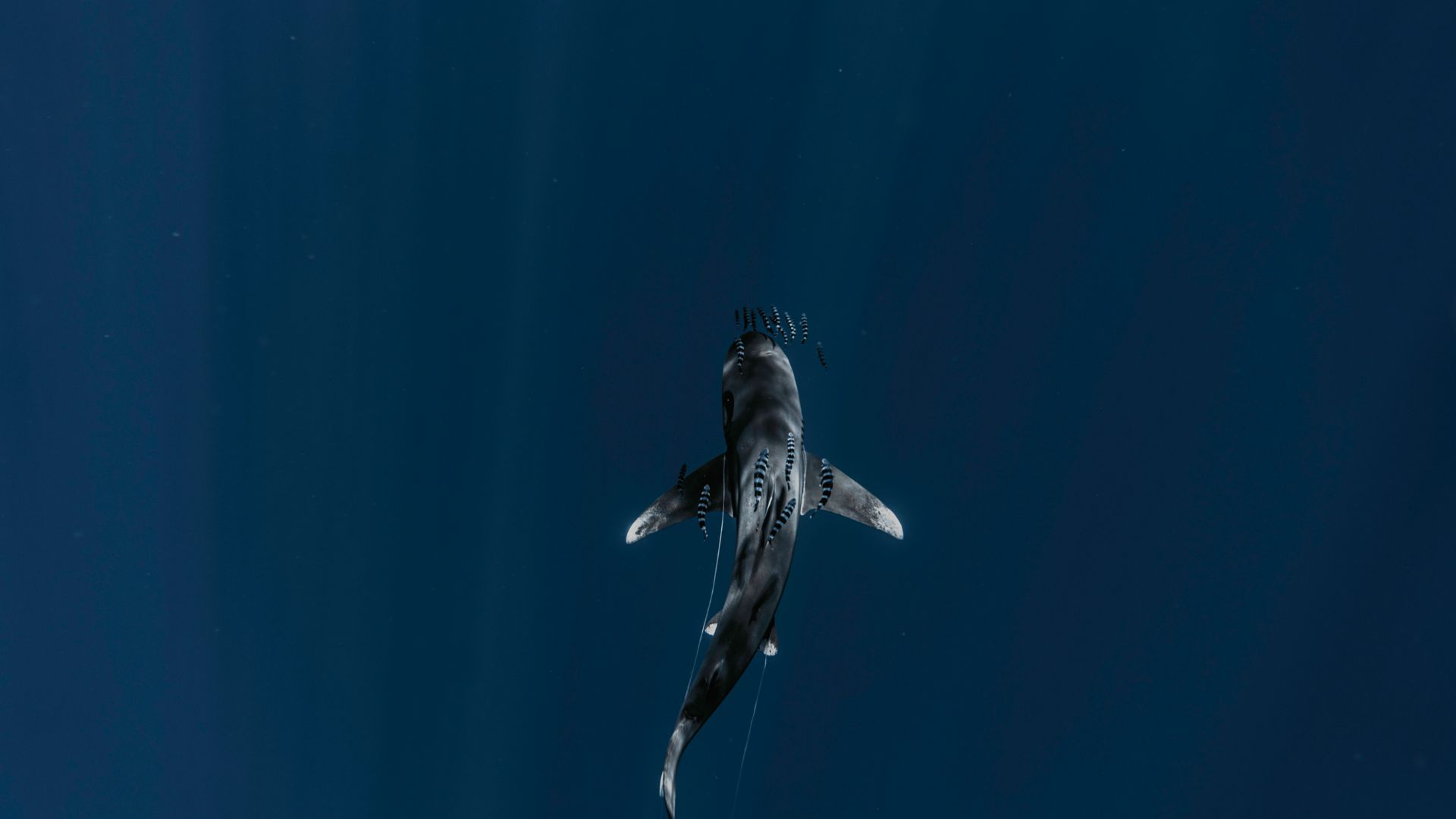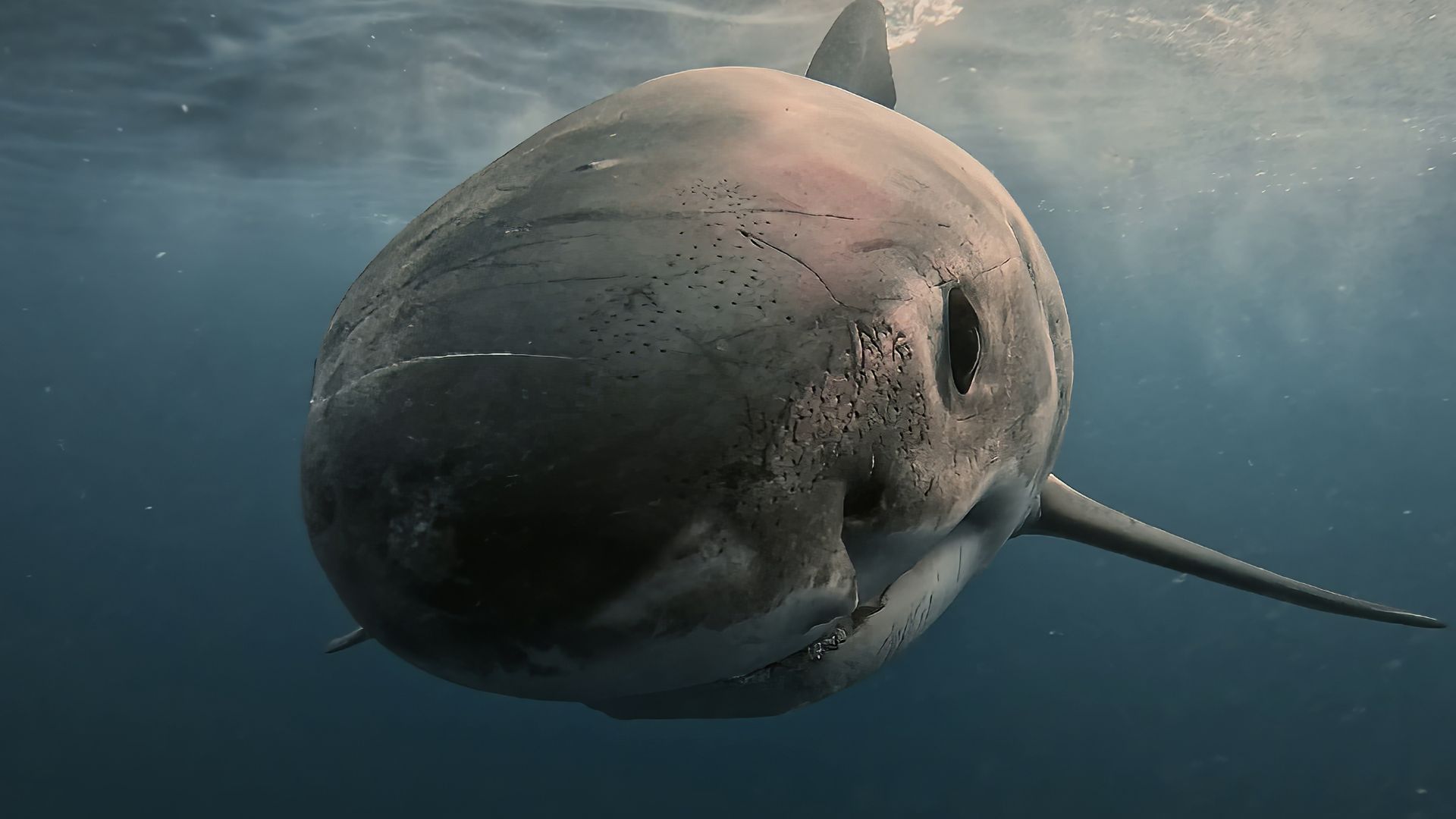
The Great White Shark: Facts, behavior, and misconceptions
When most people think of sharks, the first creature that comes to mind is often the Great White Shark. Thanks to films like Jaws, this apex predator has become an iconic figure in popular culture, synonymous with fear and danger. The Great White’s reputation as a ruthless, man-eating monster is deeply embedded in our collective consciousness. However, this reputation is far from accurate. While the Great White Shark is undeniably powerful and impressive, the reality of their behaviour is much more complex and less threatening to humans than many believe.
“Understanding the Great White Shark is not about fearing its power, but respecting its role as an apex predator that sustains the health of our oceans.”
In this article, we’ll take a closer look at the Great White Shark’s true nature, dispelling common myths and gaining a better understanding of its vital role in the ocean ecosystem:
- Facts about the Great White Shark
- Common misconceptions
- Understanding shark behavior
- Powerful predators, but incredibly important for marine ecosystems
Facts about the Great White Shark
The Great White Shark (Carcharodon carcharias) is one of the largest predatory sharks in the world, known for its impressive size and formidable hunting abilities. These sharks can grow up to 6 metres long, with some rare individuals exceeding this length, and they can weigh over 1,000 kilograms. Despite their size, Great Whites are fast swimmers, capable of reaching speeds of up to 35 miles per hour, which is a testament to their strength and agility. Their powerful jaws are equipped with rows of sharp, serrated teeth, designed to tear through the flesh of marine mammals like seals, which make up a significant part of their diet.
Great White Sharks are typically found in temperate coastal waters, though they can be spotted in a variety of oceanic regions around the world. They are most commonly found along the coasts of South Africa, Australia, California, and parts of North America. They tend to prefer areas where cold and warm waters meet, creating an environment rich in prey. As apex predators, Great Whites play an essential role in maintaining the balance of marine ecosystems by regulating the populations of prey species. Their presence helps prevent overpopulation and ensures the health of the entire food chain beneath them.
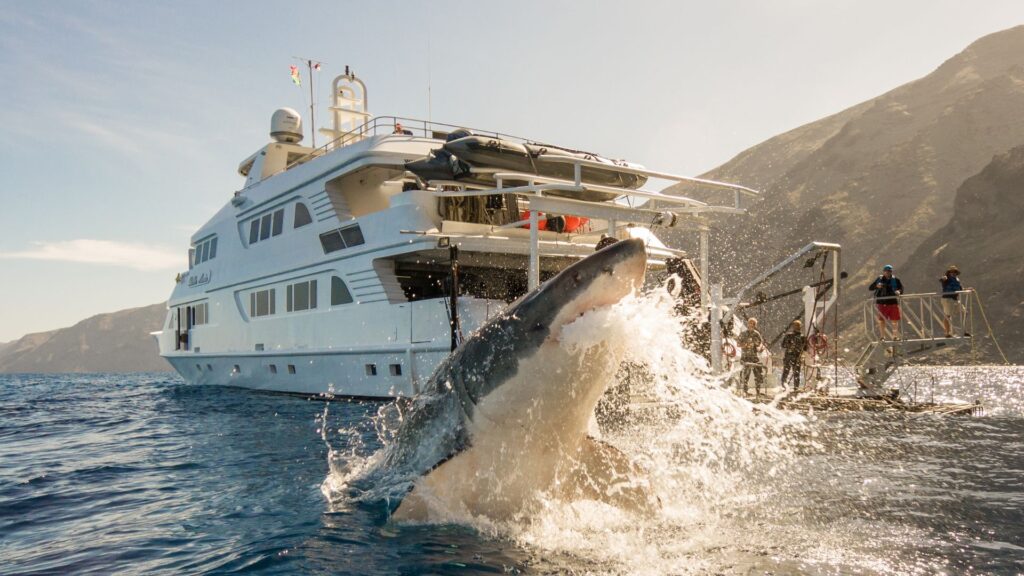
Common misconceptions
One of the biggest misconceptions about Great White Sharks is that they are bloodthirsty creatures that actively hunt humans. This myth has been perpetuated by movies like Jaws and sensationalised media reports, which often focus on rare shark attacks. In reality, shark attacks on humans are incredibly rare, and when they do occur, they are often the result of a shark mistaking a human for its natural prey, such as a seal. Great Whites are not specifically targeting humans, and most attacks are a case of curiosity rather than aggression.
The idea that Great Whites are vicious predators that actively hunt humans is simply not true. In fact, when sharks bite a human, they typically do so out of confusion, with the shark realising its mistake and usually swimming away shortly after. Great Whites are much more focused on hunting marine mammals, such as seals, sea lions, and dolphins. They tend to feed on these animals because of their high fat content, which provides the energy Great Whites need to sustain their massive size.
Another misconception is that Great Whites are solitary creatures. While they are often seen alone, research has shown that Great Whites are more social than we initially thought. They engage in complex social behaviours, especially during feeding and mating. They have been observed to interact with one another, often forming loose groups while hunting or travelling long distances. This social structure is yet another reason why understanding the true nature of Great Whites is crucial to their conservation.
Understanding shark behavior
Great White Sharks are often misunderstood because of their perceived aggression and ruthless hunting techniques. In reality, their attacks on humans are rare and can be attributed to a combination of factors, including mistaken identity, curiosity, or territorial behaviour. When a Great White attacks, it usually takes a single bite and then retreats. This suggests that they are not necessarily trying to kill their human prey but are testing to see if the object is something they want to eat.
The Great White’s feeding behaviour is misunderstood as well. They often hunt by ambushing their prey, launching themselves from below with incredible speed to catch their victim by surprise. This method is particularly effective when hunting seals, which are often found on the surface of the water. The Great White’s ability to breach the surface in a single, powerful leap to capture prey is a remarkable feat of athleticism and power. This technique, while dramatic, is an evolutionary adaptation that has helped them thrive as an apex predator.
Great Whites also have a sophisticated hunting strategy that involves hunting in patterns. They are often seen hunting in areas with high populations of seals, using the tides and currents to their advantage. They are intelligent hunters, capable of recognising patterns in their environment and adapting their behaviour accordingly. Some studies have shown that they even use the ocean floor to hide and stalk their prey, demonstrating a level of intelligence and strategic thinking that is not typically associated with such a fearsome predator.
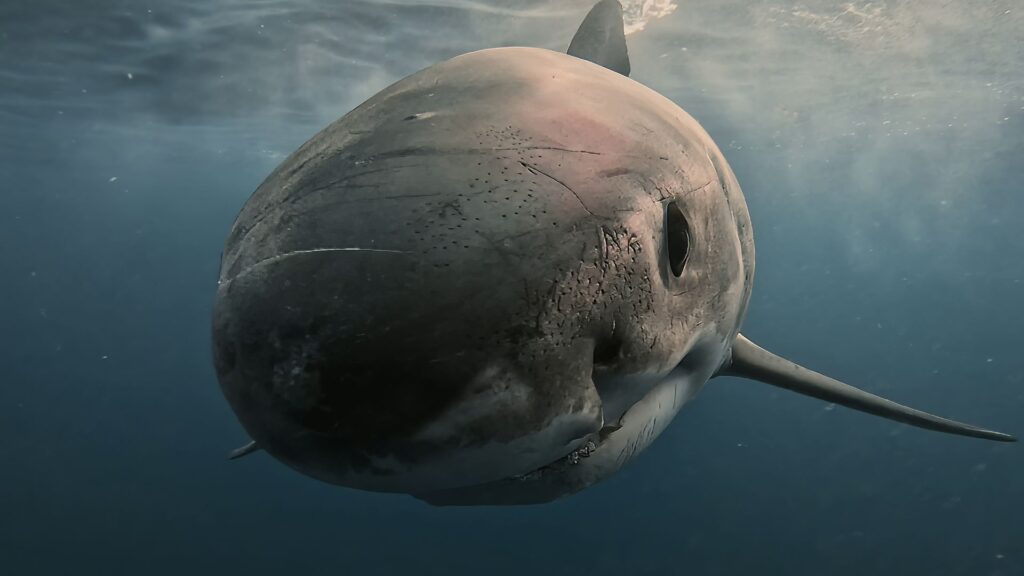
Powerful predators, but incredibly important for marine ecosystems
The Great White Shark may have earned a reputation as a ferocious killer, but this image is largely based on myth and exaggeration. While they are indeed powerful and capable hunters, their role in the ocean ecosystem is far from that of a mindless, bloodthirsty predator. Instead, Great Whites are intelligent, strategic, and vital to maintaining the balance of marine life. Understanding their behaviour, dispelling common misconceptions, and recognising their value as apex predators is essential for their conservation.
Let’s recap:
- The Great White is one of the largest predatory sharks, growing up to 6 metres and weighing over 1,000 kg. It is an apex predator, primarily feeding on marine mammals like seals.
- Despite popular belief, Great Whites are not bloodthirsty creatures actively hunting humans. Attacks on humans are rare and usually due to mistaken identity or curiosity.
- Great Whites are more social than they are often credited for, interacting with other sharks during feeding and migration. They engage in complex social behaviours rather than being solitary creatures.
- Great Whites hunt using strategic ambush techniques, often breaching the surface to surprise prey. Their attacks on humans are typically a case of mistaken identity or curiosity, not predatory aggression.
- The Great White Shark plays a crucial role in maintaining the balance of marine ecosystems. Their conservation is vital, and better understanding of their behaviour can help protect them from overfishing, habitat loss, and other threats.
Despite their fierce reputation, the Great White Shark faces numerous threats, including overfishing, habitat destruction, and the illegal shark fin trade. These sharks are crucial to the health of the oceans, and their conservation is vital for preserving the delicate marine ecosystems they help regulate. By fostering a better understanding of the Great White’s true nature, we can help shift the public perception of these incredible animals and work towards ensuring their survival for generations to come.

